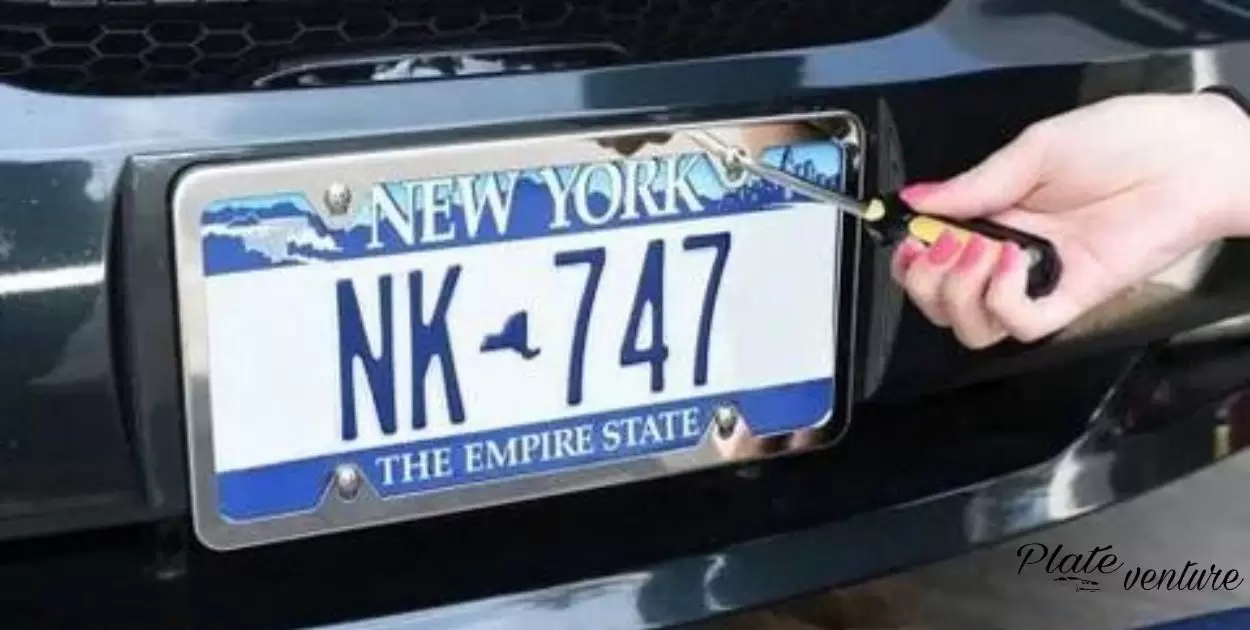License plate screws come in several standard sizes to fit different license plate frames and vehicles. The most common license plate screw size in the United States is 1/4″-20. This means the screw diameter is 1/4 inch and the threads are 20 threads per inch. Other standard license plate screw sizes include M5, M6, and 5/16″-18.
“License Plate Screw Size” – the diameter and thread count needed to properly secure a license plate. Though small, these screws perform the important task of safely attaching the plate to a vehicle. Using the wrong size could lead to a loose plate that rattles or potentially falls off.
License plate screws are available at hardware stores and automotive parts stores. Common sizes are 1/4″-20 and 5/16″-18. The size needed depends on the vehicle and license plate frame. Using the manufacturer recommended screw size ensures the plate stays securely fastened. Standard screws are 3/4 to 1 inch long and made of stainless steel or another material resistant to corrosion. Properly sized license plate screws keep plates safely attached for the long haul.
What are the standard license plate screw sizes?
The most common license plate screw size in the United States is 1/4″-20. This refers to a 1/4 inch diameter screw with 20 threads per inch. Other standard sizes include M5, M6, and 5/16″-18. Metric sizes like M5 and M6 are common on foreign vehicles. The proper screw size depends on the license plate frame and vehicle model to ensure a secure fit.
When selecting license plate screws, common lengths range from 3/4 inch to 1 inch. Longer screws may be needed to accommodate thicker license plates or frames. Stainless steel screws are preferable to prevent rusting and corrosion over time. Using the manufacturer recommended screw size and length prevents issues down the road.
Why is the license plate screw size important?
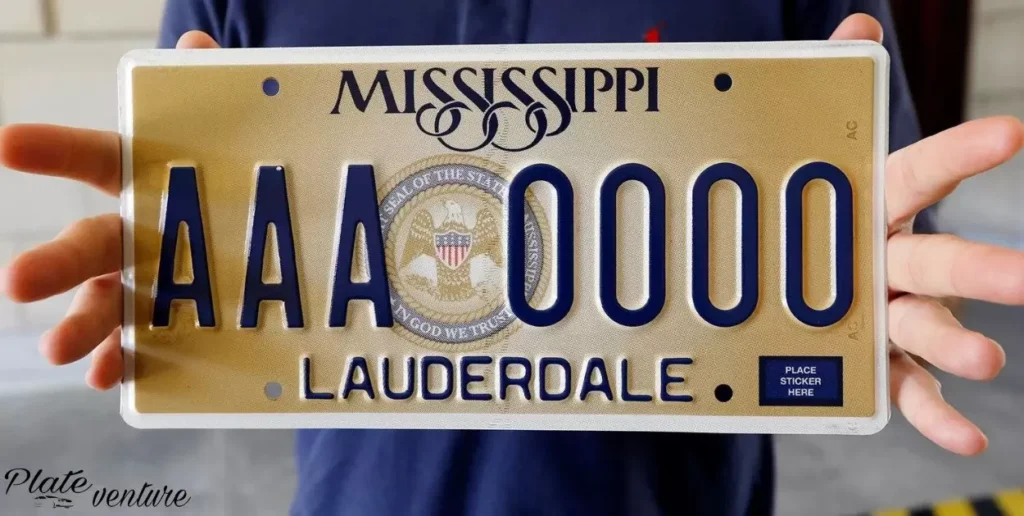
Having the proper license plate screw size is important to securely fasten the license plate to the vehicle. Using undersized screws allows movement leading to rattling plates and potential loss. Oversized screws can damage the frame or vehicle by cracking the mounting holes.
The right license plate screw size also ensures the screws tighten properly when installing the plate. A loose plate is a road hazard and violation in most places. Taking the time to match the screws to the vehicle and hardware prevents problems and tickets down the road.
How do I determine which license plate screw size I need?
The best way to identify the correct license plate screw size is to refer to the vehicle owner’s manual. For older vehicles, inspecting the existing screws or measuring the threads is needed. Metric screw sizes are common on foreign vehicles. Domestic trucks and cars typically use standard measurements like 1/4″-20 thread.
Hardware and auto parts stores also have license plate screw kits with various sizes to try out. Bringing the plate frame helps get the right length and diameter. Stainless steel screws in the manufacturer recommended size are ideal for corrosion resistance and durability.
Where can I buy properly sized license plate screws?
Properly sized license plate screws are available at most hardware stores, home improvement stores, and auto parts stores. Many stores have license plate screw kits with an assortment of common metric and standard sizes. Specialty screws in various lengths and materials can also be found online through retailers.
When buying screws, check the size, diameter, thread count, and composition like stainless steel. Matching the screws to existing plates or the vehicle specs prevents having loose plates or damage over time. Consulting the owner’s manual or a dealer parts department also helps get the right screws.
What problems can the wrong license plate screw size cause?
5 problems that can be caused by using the wrong license plate screw size:
- The license plate may become loose and rattle. This can be annoying and make your car seem poorly maintained.
- A loose license plate may eventually fall off completely while driving. This poses a safety hazard to other vehicles.
- Using a screw that is too long can damage the threads it is screwed into or puncture the surface behind the license plate.
- An improperly sized screw may fail to properly secure the license plate. This could allow it to be stolen.
- Using the incorrect license plate screw size could lead to a fix-it ticket for noncompliance if spotted by law enforcement. You may have to promptly replace the screws.
How do license plate screw sizes differ by location?
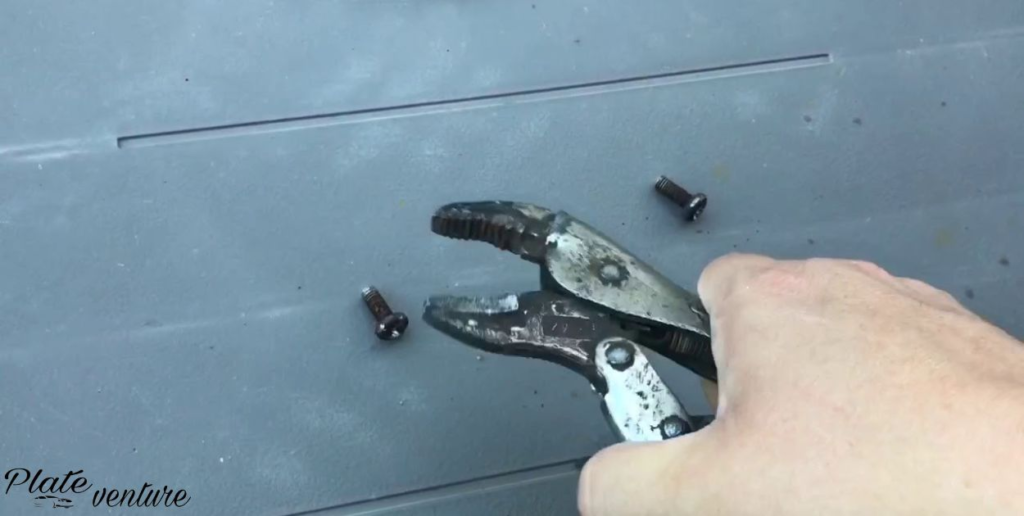
The most common license plate screw size used in the United States is 1/4″-20. This refers to a 1/4 inch diameter screw with 20 threads per inch. However, metric screw sizes are more commonly used internationally. For example, license plates in Europe often use an M5 size screw, which is 5mm in diameter. Vehicles manufactured overseas but sold in the US will likely use the metric system for license plate screws as well.
While the 1/4″-20 screw is prevalent in the US, other standard sizes like 5/16″-18 may be required for certain vehicle makes and models. Trucks often need larger screws than passenger cars. Knowing the specific screw size needed for your vehicle ensures a solid mount for the license plate. Refer to the owner’s manual if unsure.
What is the most common license plate screw size in the US?
As mentioned, the most ubiquitous license plate screw used in the United States is the 1/4″-20 or quarter-twenty screw. This screw has a quarter inch diameter and 20 threads per inch along the shaft. It fits a wide variety of cars, trucks, SUVs, and other vehicles built by both domestic and foreign automakers. The 1/4″-20 is readily available at hardware stores and auto parts outlets, making it the go-to choice for many drivers replacing their license plate screws.
While not all vehicles take this size, the versatility and widespread availability of quarter-twenty screws makes it the predominant license plate fastener in the country. For a common vehicle, odds are a 1/4″-20 screw will securely mount the license plate. Checking your owner’s manual or testing the screw can confirm whether this standard size works for your car.
What metric license plate screw sizes are used internationally?
Outside of the United States, license plates often require metric-sized screws, measured in millimeters. Common sizes include M5, M6, and M8, denoting the diameter. An M5 screw is 5mm, M6 is 6mm, and so on. Lengths range from 12mm to 20mm.
For metric license plate bolts, the specification includes thread pitch. For example, M6x1.0 indicates a 6mm diameter with a 1.0mm thread pitch. While vehicles sold internationally use metric screws, US models may still specify standard fractions. Understanding these variations is crucial for the correct US license plate size.
How does the license plate screw size relate to the license plate frame?
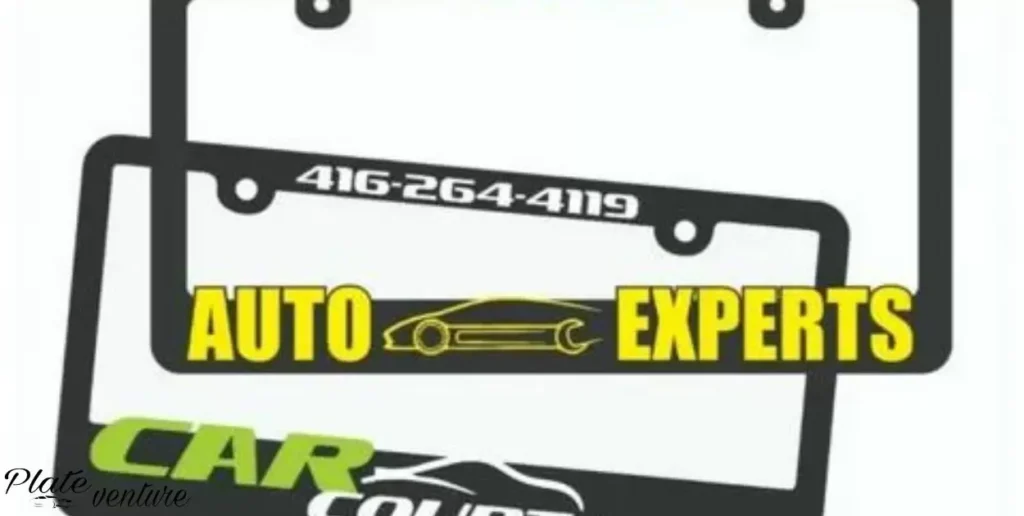
When selecting license plate screws, the frame the plate fits into must be considered. Standard screws may be too short if using a license plate frame that spaces the plate away from the vehicle. Likewise, longer screws are needed to pass through the frame and adequately thread into the mounting holes.
Another factor is frame depth or thickness. Bulky metal frames require longer screws than slimmer plastic varieties. The extra length ensures the screws anchor securely into the vehicle, keeping the plate and frame solidly attached. Getting screws at least 5mm longer than bare minimum size provides room for license plate frames.
Can I use a non-standard license plate screw size?
While not advisable in most situations, it is possible to install license plates with non-standard screw sizes in a pinch. If unable to source the recommended size, using the closest fractional size in standard or metric may work. However, the screw should not be drastically larger or smaller than specified to avoid issues.
The risk is that undersized screws won’t properly secure the plate, while oversized screws can damage threaded holes or interior components. Improperly sized screws also tend to loosen more easily. Only use non-standard screws temporarily until the proper replacements can be obtained and installed for optimal safety.
What factors impact choosing the license plate screw size?
The vehicle make and model is the most important factor in determining which license plate screw size is needed. Vehicles from different manufacturers often require screws with specific diameters and thread patterns. The thickness of the license plate frame and any accessories like plate covers or washers will also affect the screw length needed for a secure fit. Using screws that are too long can damage the vehicle, while screws that are too short won’t hold the license plate tightly.
It’s critical to consult the vehicle owner’s manual or manufacturer guidelines to identify the correct screw sizing. Hardware stores also have license plate screw selection guides based on make and model. Carefully measuring all components between the plate and vehicle body assists in finding screws long enough to properly secure the license plate, without bottoming out or contacting the vehicle surface.
How does the vehicle model affect license plate screw sizing?
The vehicle manufacturer designs specific holes and threads in the license plate mounting area on the rear of cars and trucks. Japanese, American, and European vehicles have different standard screw sizes they are designed for. Metric license plate screws are common on many foreign vehicles, while American makers often use standard fractional sized screws.
The depth of the recessed mounting area and inclusion of foam pads or protective washers determines the license plate screw length needed. Each vehicle model has optimal screw lengths, diameters, and shapes to securely hold the license plate without damaging the vehicle body. Consulting the owner’s manual or online guides provides the exact screw specifications for a particular make and model.
Do thicker license plates need longer license plate screws?
Yes, thicker license plates require marginally longer screws to fully seat and tightly secure the plate. Standard plates are around 1/16 inch thick, but specialty plates can be over 1/8 inch thick. The extra plate thickness means the screws need to be longer to fully engage the mounting holes in the vehicle.
Getting screws that are only slightly longer than the standard size is important though. Screws that are too long can bottom out or contact the vehicle body, potentially marring the surface. The extra length should match the added plate thickness, with washers making up any additional gap if needed. A deep license plate frame or accessories would also factor in to determining the best screw length.
Should stainless steel or other screws be used for license plates?
Stainless steel is the best material choice for license plate screws exposed to the elements. Stainless resists rust and corrosion far longer than standard steel or coated screws. Other corrosion-resistant alloys or plastics can work too.
Using the manufacturer-recommended screw type is ideal, but stainless steel matches the longevity of most vehicles. Aluminum screws are too soft and prone to stripping. Any metal screws can be treated with anti-seize lubricant to deter rust and help prevent them from freezing up over time. Plastic screws won’t hold up over years of heat cycles and vibration either. Overall, stainless steel screws provide the optimum strength and corrosion resistance.
Can oversized screws damage the license plate or vehicle?
Yes, oversized license plate screws that are too long can cause damage by bottoming out in the mounting holes. The tips of excessively long screws can dent, scratch, or puncture foam pads, washers, or the sheet metal behind the license plate. This marring damages protective coatings and could lead to premature rust or holes in the body.
Oversized screw diameters won’t properly fit the license plate holes. The threads can strip out the mounting holes or apply pressure that cracks or splits the plate. Screws with too large a diameter should never be forced into place. Even with washers, they put excessive strain on the holes. Using screws longer or wider than the vehicle or license plate is designed for risks harming both. Vehicles and license plates require screws specifically sized for secure mounting.
When should the license plate screws be replaced?
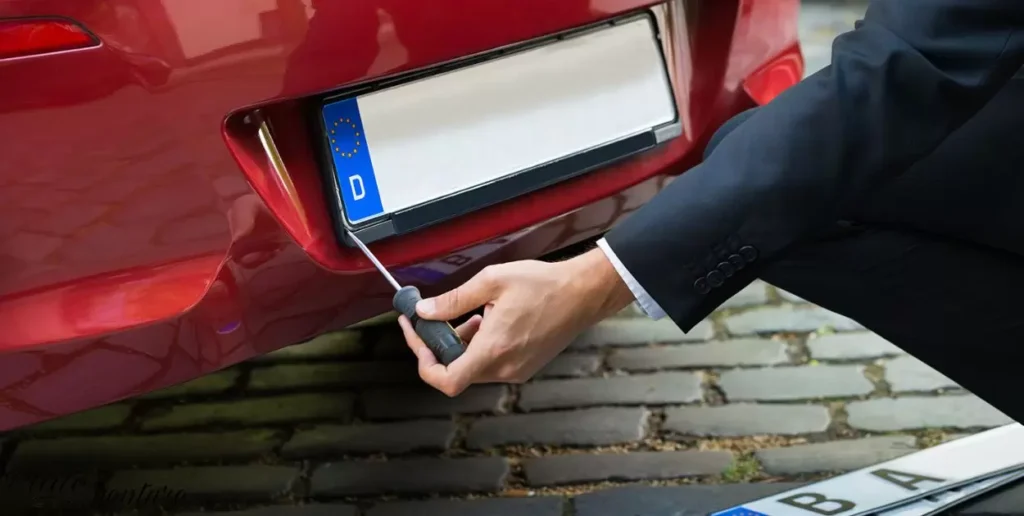
You should replace your license plate screws if they become loose, corroded, or damaged. Check the screws periodically by trying to wiggle the license plate. If the plate moves at all, the screws likely need to be replaced. Also inspect the screws and screw holes for any visible corrosion, cracking, or damage. Replacing deteriorated screws before they fail completely can prevent the license plate from detaching at high speeds.
Ideally, you should replace all of the license plate screws at the same time if one or more become loose or deteriorated. Mixing old worn screws with new screws can accelerate damage to the older screws. Replacing only one or two screws can lead to uneven license plate stability. Replace all screws simultaneously for even support and integrity.
How do I know if my license plate screws are corroded?
You can visually inspect license plate screws for corrosion buildup. Rust, green deposits, pitting, cracking, or flaking metal on the screw shaft or head indicate corrosion. Corroded screws will also feel rough instead of smooth to the touch. They can strip, break, or snap when being unscrewed or tightened. If the screw no longer reflects light uniformly, has a matte appearance, or you see corrosion around the screw holes, the screws should be replaced.
Another sign of corroded license plate screws is difficulty removing them. Heavily corroded screws can fuse to the license plate frame or vehicle body. Forcefully removing stuck corroded screws risks damaging the mounting holes. If screws do not turn out freely by hand, corrosion is likely present, and the screws need replacement.
What are signs that the license plate is loose or screws are damaged?
Loose, damaged license plate screws may cause the license plate to visibly shift, sag, or rattle when driving. There may be fresh scratches or damage around the screw holes from plate movement. You may hear buzzing, rattling or flapping noises from the license plate area in motion. Fastening holes can become enlarged or misshapen over time as loose screws shift and pull.
Inspect screws that secure a loose license plate for damage. The screw heads may be partially sheared or stripped if overtightened or improperly removed. Check for bent, broken or missing screws as well. If any screws show damage, replace all the license plate screws for even support.
How often should I check that the license plate screws are tight?
You should visually inspect your license plate screws at least every six months to check that they remain properly tightened. Physically attempt to jiggle or move the plate, testing for any loosening. Also examine the area around all screw holes for emerging cracks or damage. Re-tighten any loose screws immediately and replace damaged screws.
Casually observe your license plate when washing your car or performing visual walk-arounds. Scan for misalignment, missing or disconnected screws, wavering, rattling or other visible signs that your plate is not fully secured. Periodically ensuring your plate screws remain snug helps prevent safety hazards.
Is it safe to replace just one or two loose license plate screws?
It is generally not advisable to replace only one or two loose license plate screws. The unused mounting holes can allow the plate to shift unevenly. Over time this imbalance can enlarge holes, crack plastic frames, or damage the vehicle body near the empty holes. For stability, security and symmetry, you should always replace all license plate screws simultaneously.
If you are in an emergency situation with one or two missing screws, temporarily replacing just those screws can secure the plate until a full replacement set arrives. Take care not to overtighten partial screws to compensate for missing ones. Improperly torqued screws are more likely to fail. Replace any temporary single screws with a full set as soon as feasible.
What tools do I need to remove and install license plate screws?
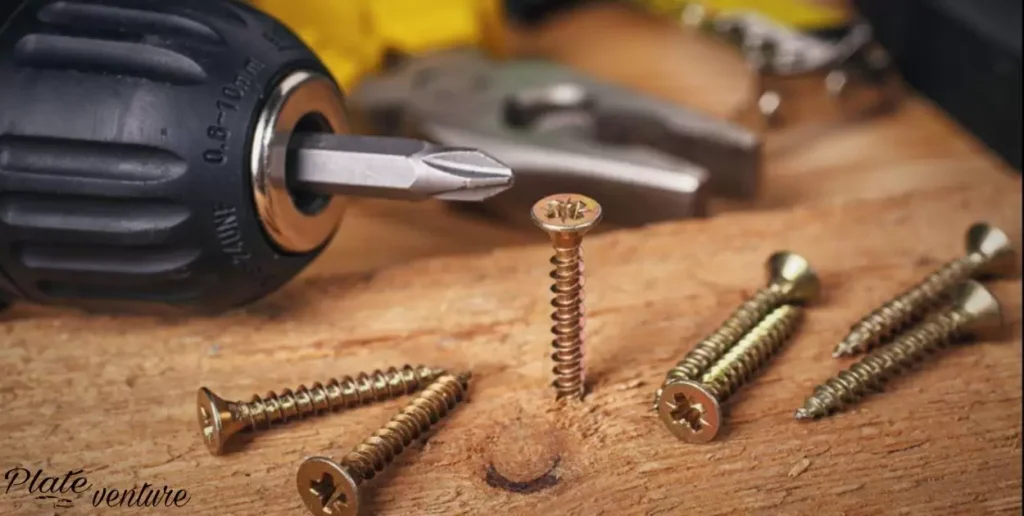
To remove and install license plate screws, you will need either a Phillips or flathead screwdriver, depending on the type of screw head. A ratchet with the appropriate sized socket can also be used to loosen or tighten the screws more quickly. Make sure to use a screwdriver that properly fits the screw head to avoid stripping or damaging the screws. You may also want to have replacement screws on hand in case any get damaged during removal.
When selecting tools for license plate screws, opt for good quality screwdrivers and sockets that allow you to apply adequate force without damaging the screws. Poor quality or improperly sized tools are more likely to round off screw heads or strip the threads. Investing in decent tools upfront will make license plate screw replacement easier.
Will a regular screwdriver work for license plate screws?
Yes, a basic flathead or Phillips head screwdriver will typically work to remove most license plate screws. Ensure you select a screwdriver size that correctly matches the screw head – either a Phillips or flathead. Using a screwdriver that doesn’t properly fit could strip the screw head or fail to provide enough grip to loosen it. Standard screwdrivers from any hardware store should be suitable, as long as they are in good condition and not worn or damaged.
While a basic screwdriver is fine, you may prefer using a ratchet with socket for quicker removal, especially if the screws are stuck or corroded. Manual screwdrivers require more effort and time unscrewing each screw. Ultimately a quality regular screwdriver will get the job done in most license plate screw replacement scenarios.
What size socket do most license plate screws require?
The most common license plate screw socket sizes are 1/4-inch and 5/16-inch. Metric license plate screws use socket sizes around 6mm to 8mm. To determine the proper socket size:
- Examine the current license plate screws on your vehicle before removing them. The screw head size and diameter should be visible.
- Consult your vehicle owner’s manual or manufacturer for the recommended license plate screw socket size.
- If unknown, remove one screw with a screwdriver first. Then test different sized sockets until you find the one that fits correctly.
Here is a table with some typical license plate screw socket sizes:
| Screw Type | Socket Size |
| Standard (inch) | 1/4-inch, 5/16-inch |
| Metric (mm) | 6mm, 8mm |
Having a socket set with both standard and metric sizes will allow you to find the socket that matches your vehicle’s license plate screws.
How can I prevent damaging the license plate or vehicle when replacing screws?
To avoid damaging the license plate or vehicle when replacing screws, properly align the new license plate before inserting and tightening the screws. Ensure no parts of the plate are overlapping sections where it shouldn’t. Tighten screws gradually using the appropriate sized screwdriver or socket, checking periodically that the plate remains correctly positioned. Apply firm pressure when tightening but don’t overtighten.
Also, make sure to replace any corroded or damaged screws rather than reusing them. Insert screws carefully straight into the existing holes without forcing them at an angle. Use care when using power tools, only using lower torque settings to reduce risk of stripped threads or cracks in the plate from excessive force. Periodically check that surrounding paint hasn’t been scratched or chipped during the process.
What is the best practice for tightening license plate screws?
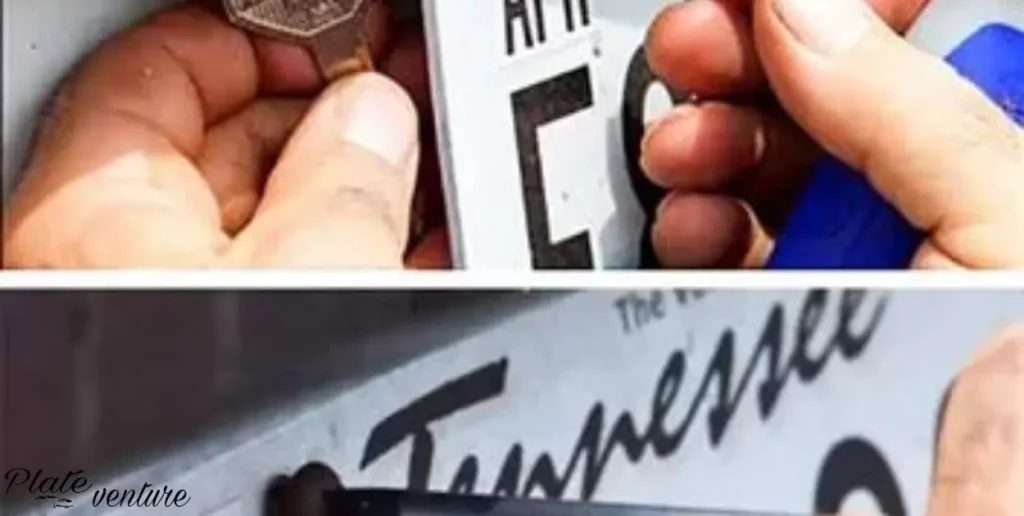
The best practice is to tighten license plate screws gradually using hand tools, alternating diagonally across screws to evenly distribute pressure. Tighten each screw partially down, then repeat the alternating sequence until all screws feel snug. Avoid fully tightening one screw at a time. For power drills or drivers, use a low torque setting and drive slowly.
Do not overtighten the screws. Check that the license plate has a little play or wiggle room when properly secured, allowing for vehicle vibrations and temperature changes. Overtightened screws are more likely to crack the plate over time. After installation, return 24 hours later to check all screws remain tightened. Ensure your tools are in good condition and fit the screw heads properly to avoid stripping.
Frequently Asked Question
What is the most common license plate screw size?
The most common license plate screw size is 1/4″-20 which indicates a 1/4 inch diameter screw with 20 threads per inch.
Do all vehicles use the same license plate screw size?
No, license plate screw sizes can vary by vehicle make and model – check your owner’s manual or measure your existing screws.
Where can I buy license plate screws?
License plate screws are available at most hardware stores and auto parts stores, often sold in specialty screw/fastener drawers or with license plate frames.
What tools do I need to remove license plate screws?
You’ll need a Phillips or flathead screwdriver, ratchet, or drill with the properly sized bit to remove most license plate screws.
How can I tell if my license plate screws are corroded?
Corroded license plate screws may have rust, be harder to unscrew, or have rounded out heads that no longer grip your screwdriver.
Conclusion
Choosing the right license plate screw size is important for properly securing your license plate. The most common sizes are 1/4″-20 and 5/16″-18, which indicate the diameter and thread count. Metric license plate screws also exist internationally. Make sure to use the size recommended for your vehicle’s make and model. Using stainless steel screws can help resist corrosion.
Installing license plate screws takes just basic tools like a screwdriver or socket set. License plate screw size varies, so measure your existing screws first. Tighten all screws gradually to evenly distribute pressure. Do not overtighten. Recheck after 24 hours that screws remain snug. Properly sized and installed license plate screws keep your plate securely attached while allowing for vibration and temperature changes.
